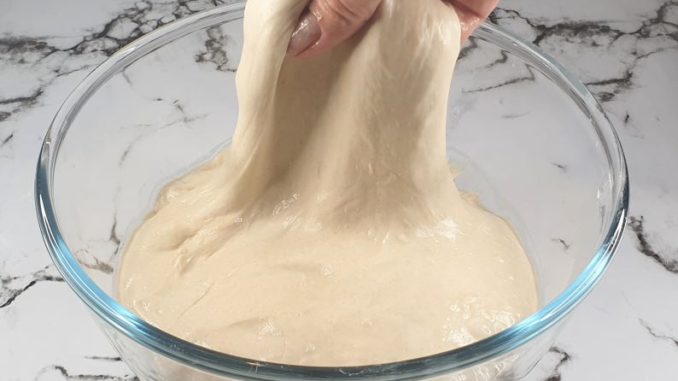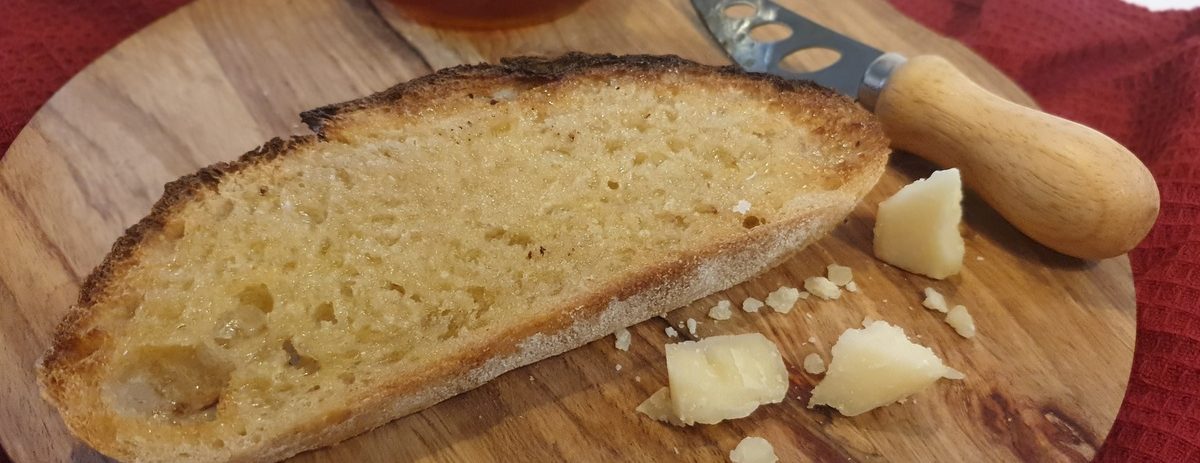
Bread takes the effort of kneading but also requires sitting quietly while the dough rises with a power all its own
~ David Richo ~
No gluten-free here!
Kneading is hard work. Bakers who regularly knead dough by hand often have sore and misshapen hands. My grandmother baked bread weekly as my grandfather refused to eat shop-bought bread. For his sins, he got to be the one who had to knead the dough for her. Why do we knead dough? Part of the alchemy of bread baking involves the formation of gluten. Gluten is a protein in wheat which is eventually responsible for the structure of the bread. When yeast or leaven ferments the flour, it forms carbon dioxide bubbles and ethanol. As these bubbles expand and rise, it drags the dough with it. But it is the gluten in the dough that keeps everything together. When you bake the risen loaf, the gluten expands even further and then sets, having trapped all the beautiful bubbles.
It’s all in the technique
The Crust and Crumb course taught me that there is a much easier way of developing the gluten in bread dough. It’s called the Stretch and Fold Technique. With this technique, you mix the dough and leave it to rest for 20 to 30 minutes. This gives the flour time to absorb the water and start developing gluten. When you then stretch the dough and fold it onto itself, you are stretching the gluten, which strengthens it. Once you have stretched and folded the dough about four times (one set), the dough tightens up and is difficult to handle. Rest the dough for 20 to 30 minutes to give it a chance to relax and form more connections. One set of stretching and folding is repeated every 20 to 30 minutes for a total of four sets. This technique develops all the gluten connections a good bread needs.
There’s nothing like a good stretch
The Stretch and Fold Technique has really simplified the baking process. You are unlikely to overdo gluten development in this way, and you have hands-on knowledge of how your dough is doing. It also makes baking with high hydration possible. The hydration of the dough is the amount of water that is used. If you want to make bread with high hydration like focaccia, ciabatta or whole-wheat sourdough, it is much easier to just lift and stretch the dough with your fingertips rather than kneading on the counter. And of course, it is much less work than traditional kneading. Even my granny with her arthritic hands would have been able to do it.

Nice video and explanation. I’m doing this today with chiabatta no2. I bumped the hydration up from 72 to 76% and it was hard to kneed before, so stretch and fold it is!
Stretch & Fold is definitely the easiest way with high hydration ciabatta. Three sets at 20-minute intervals should do it.